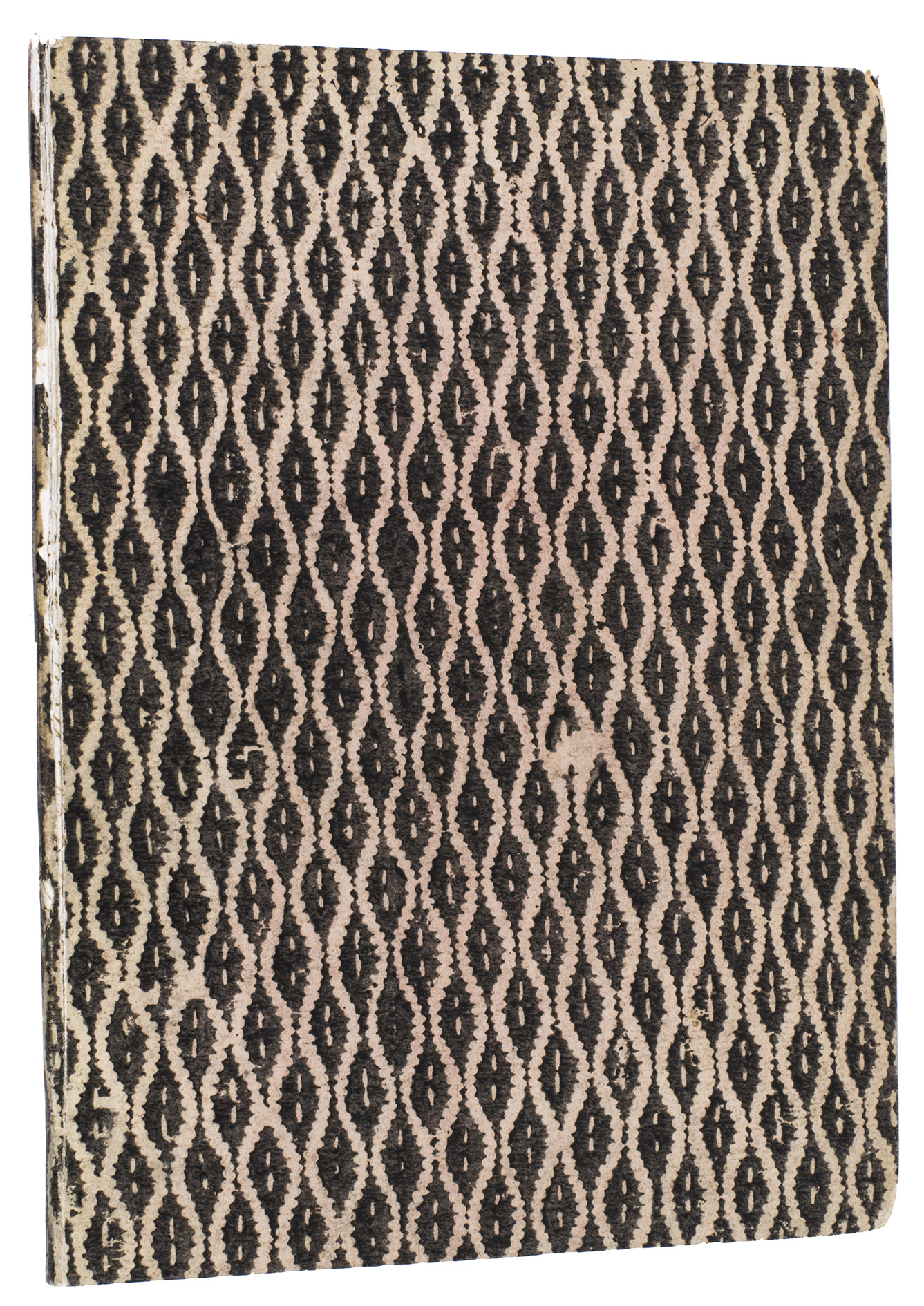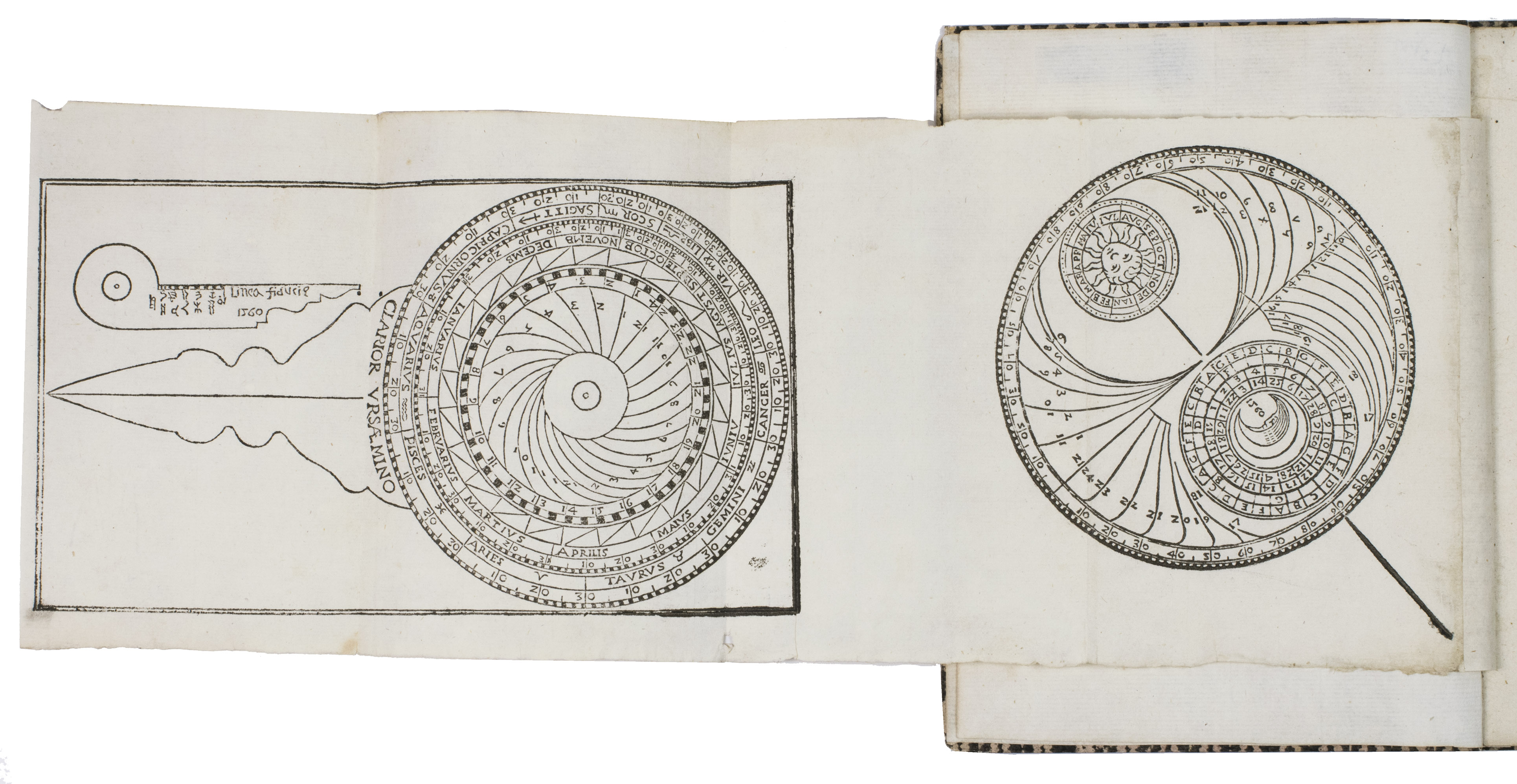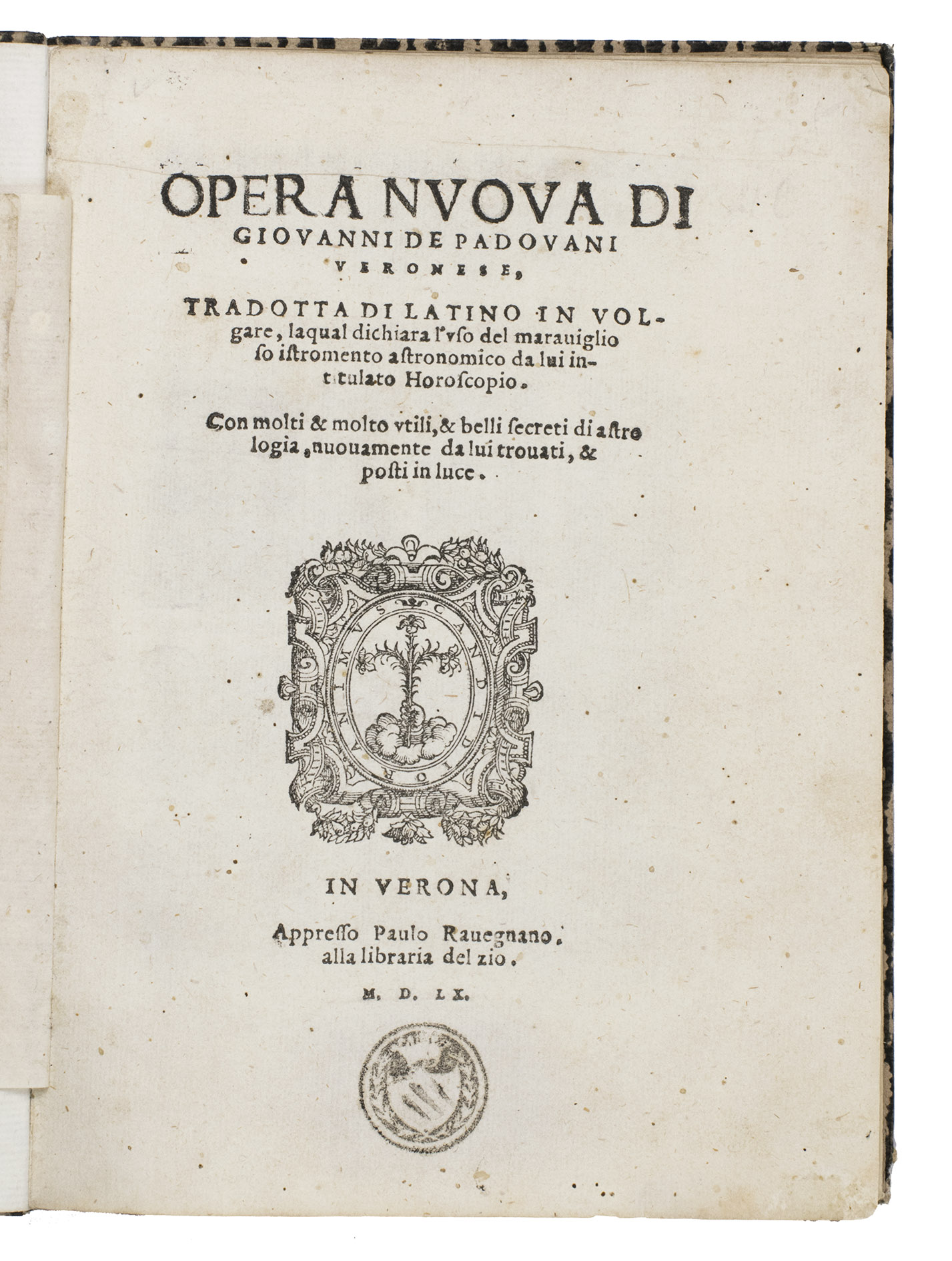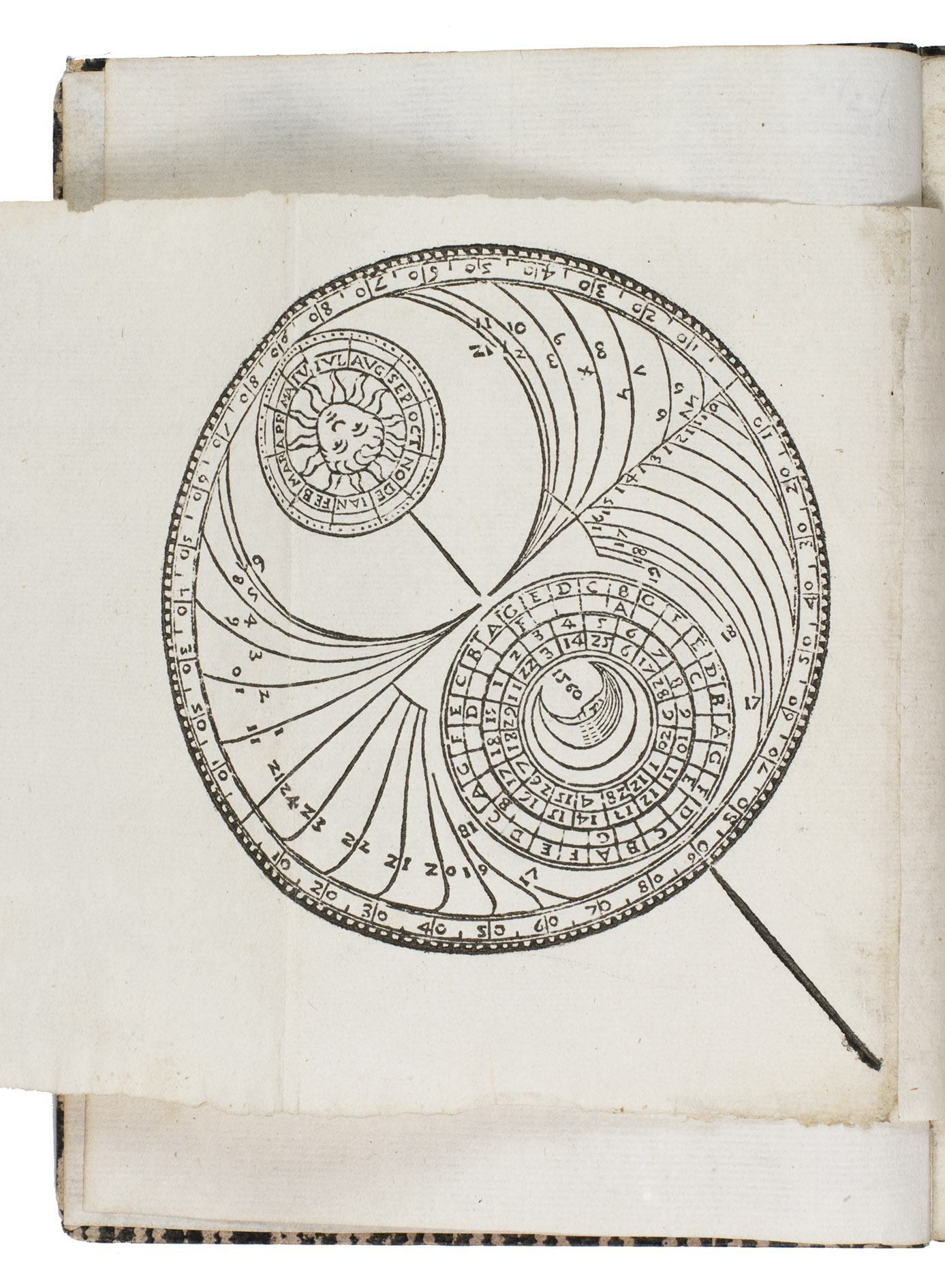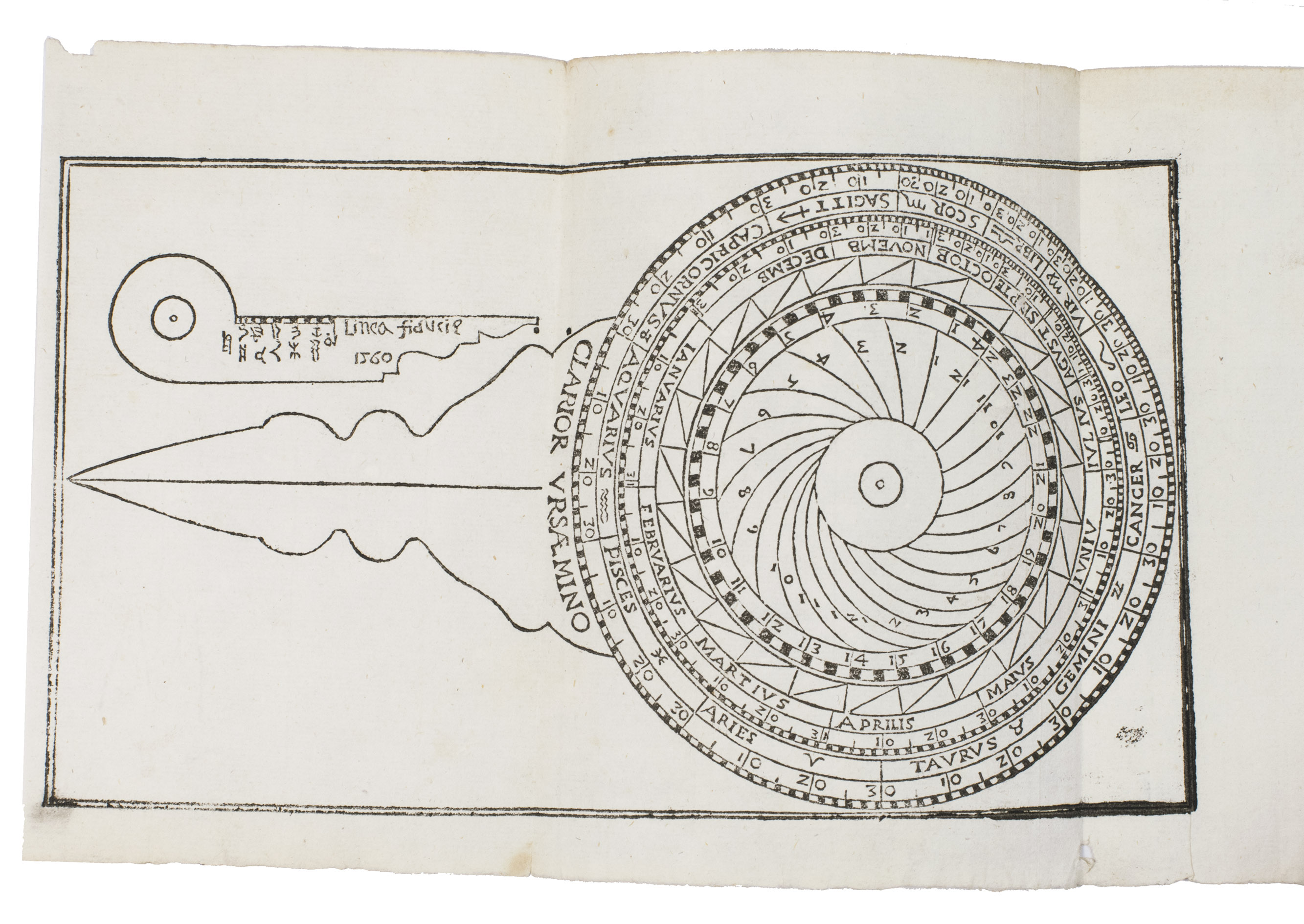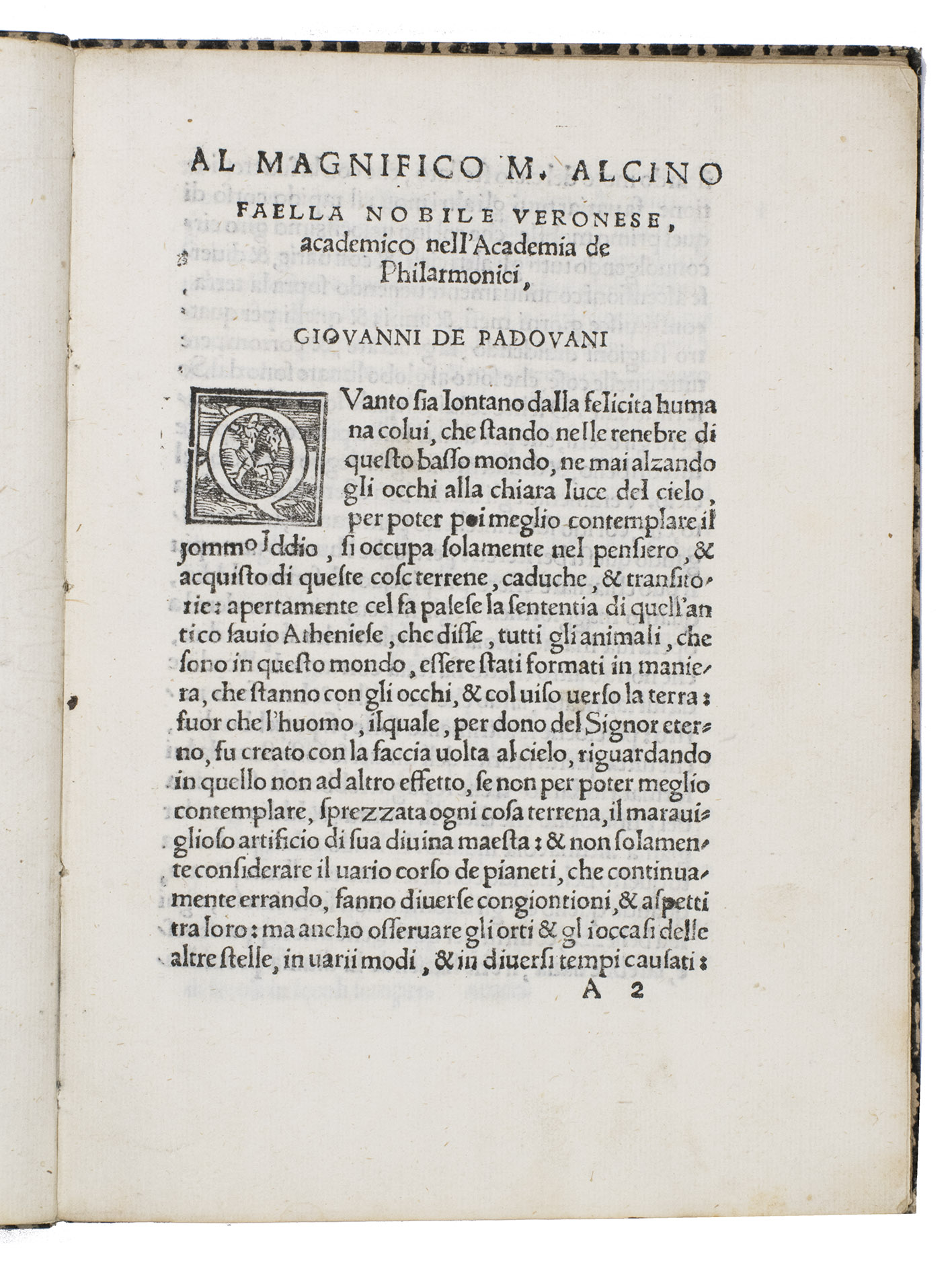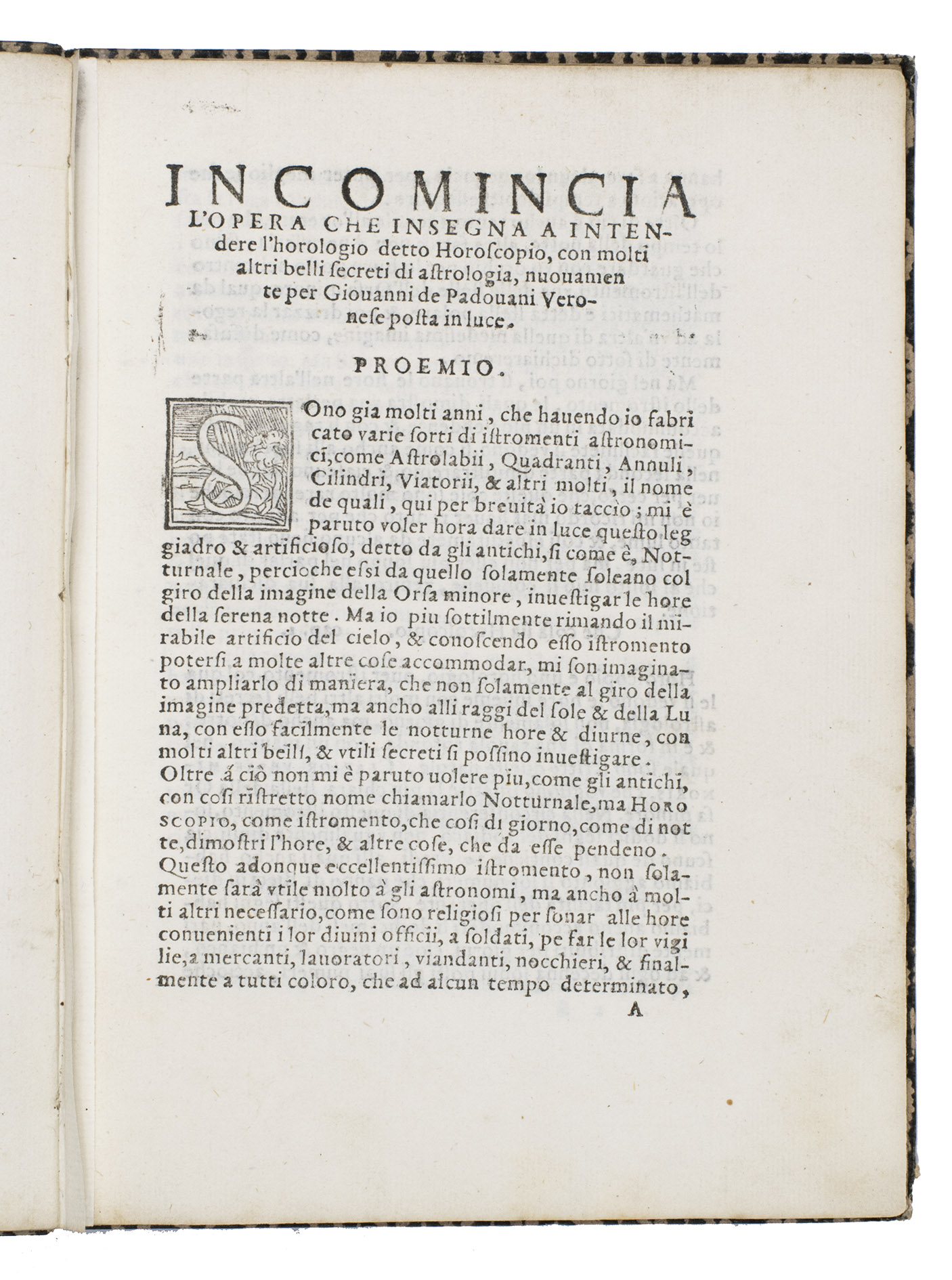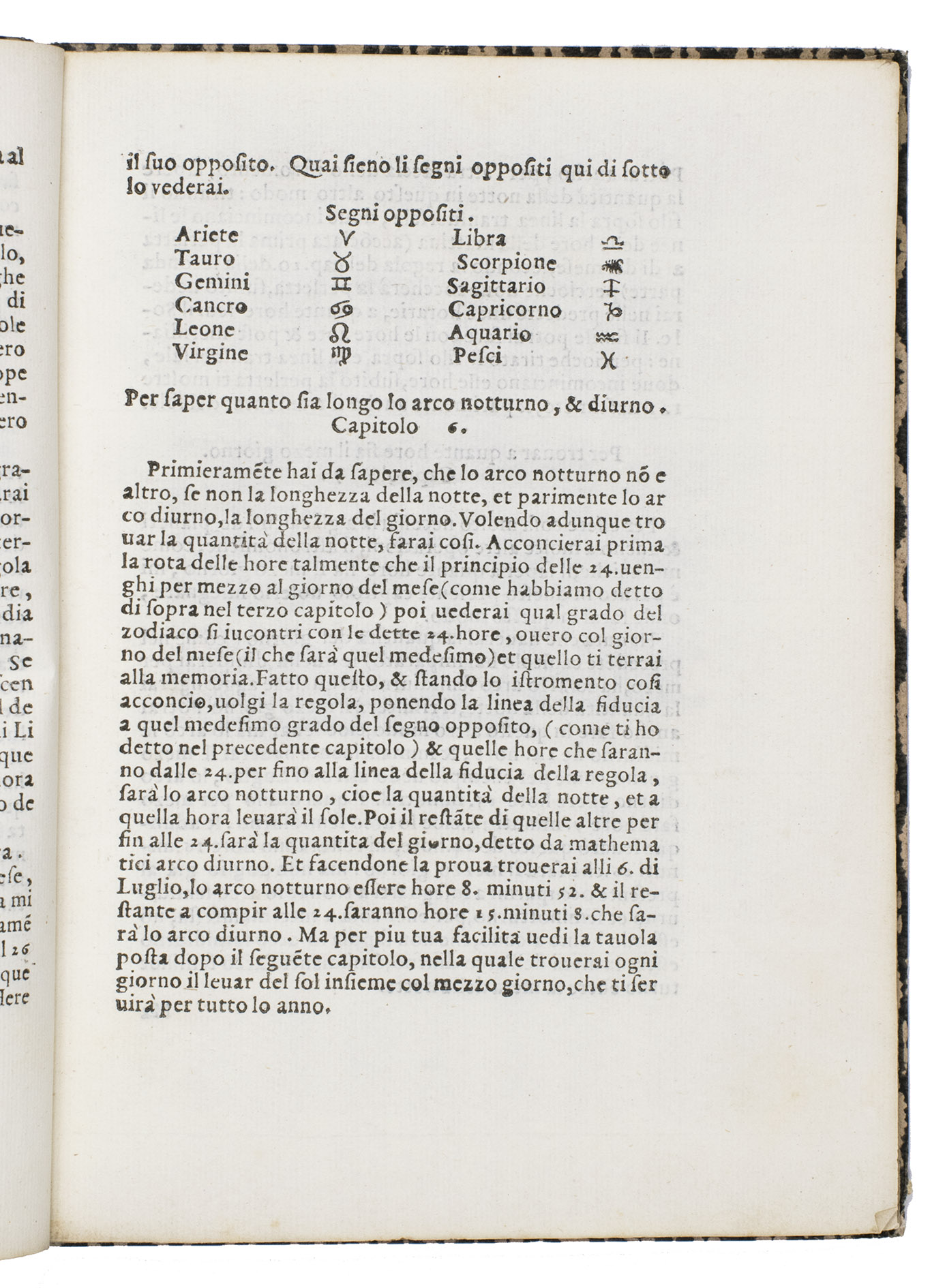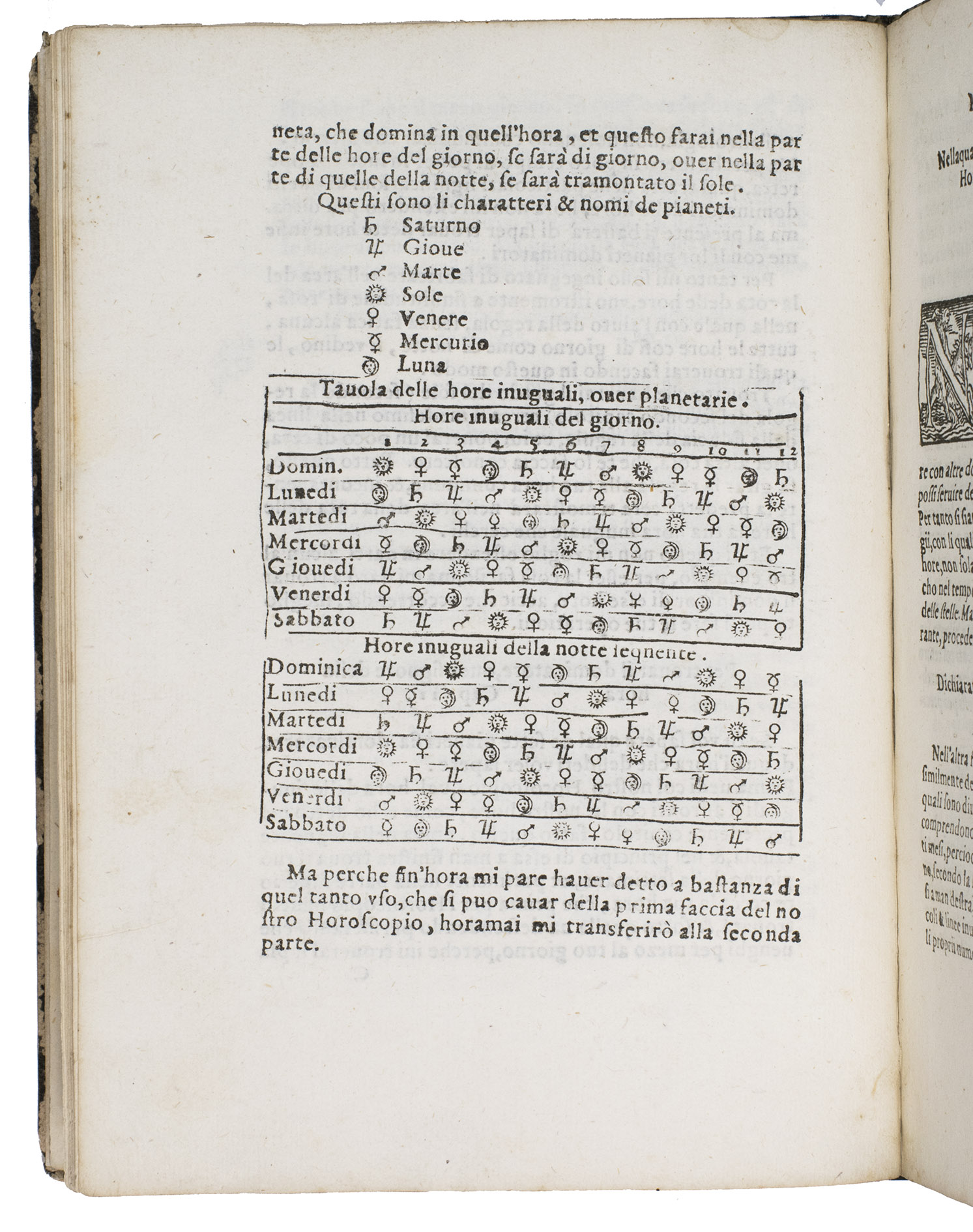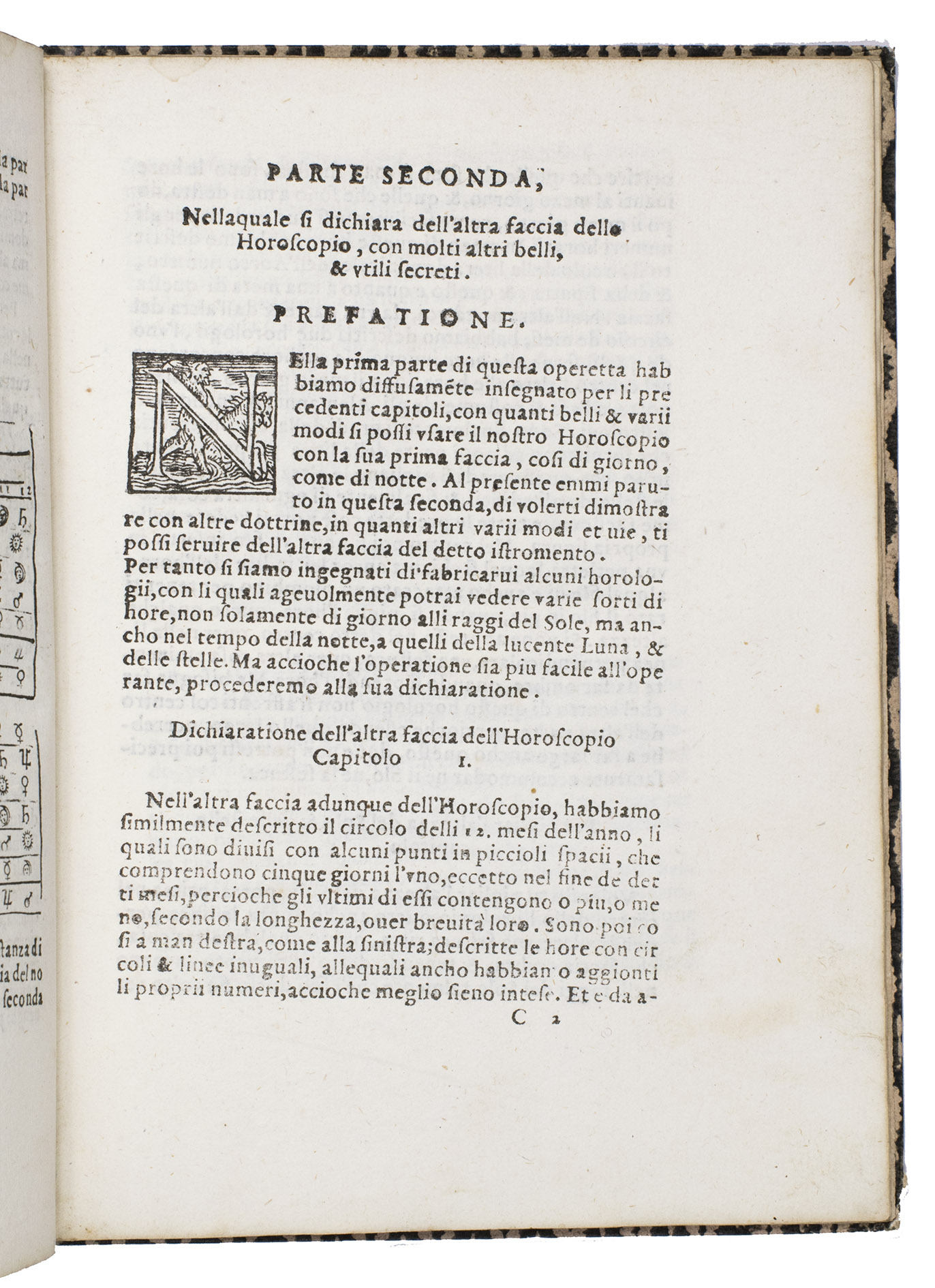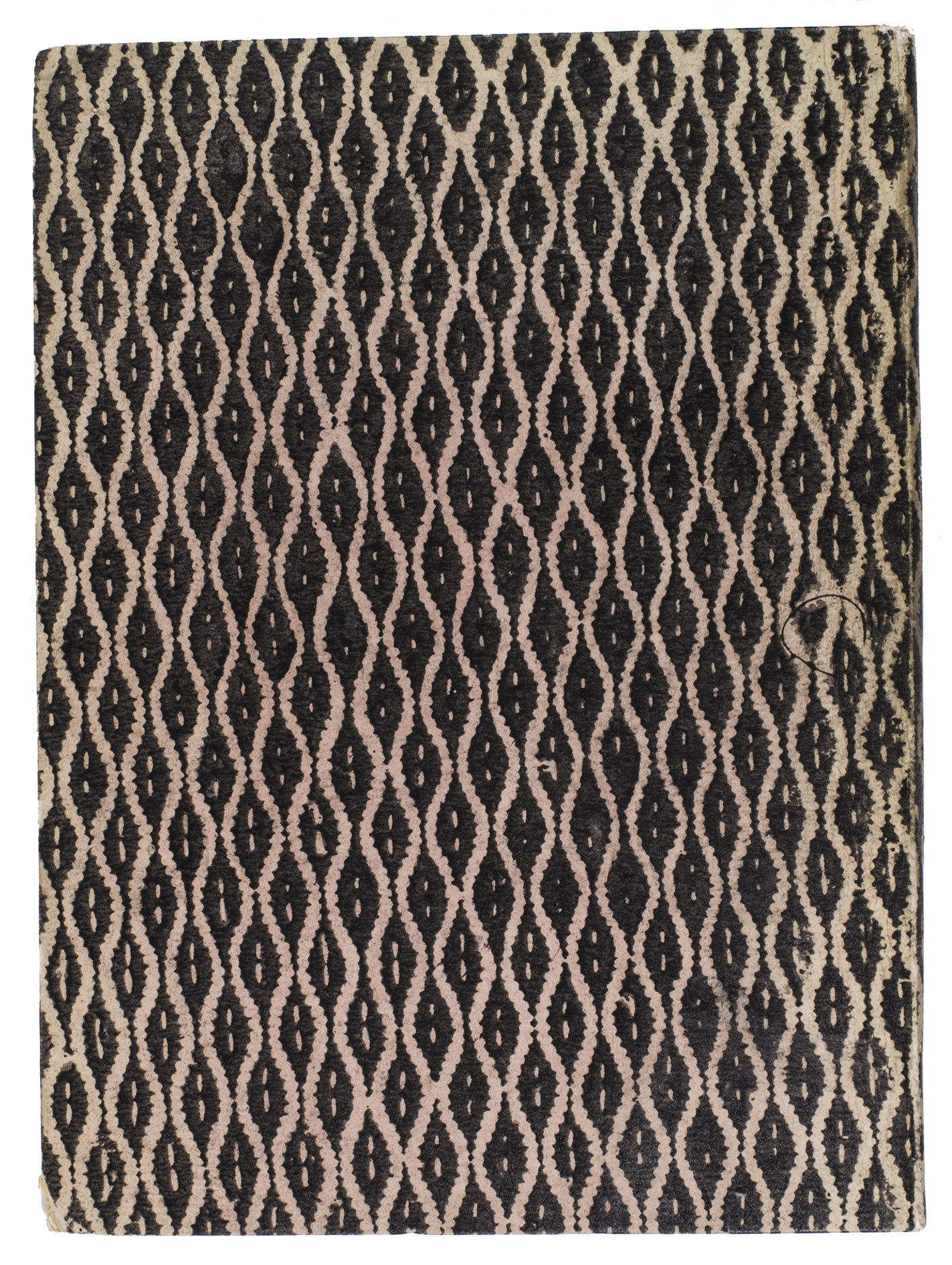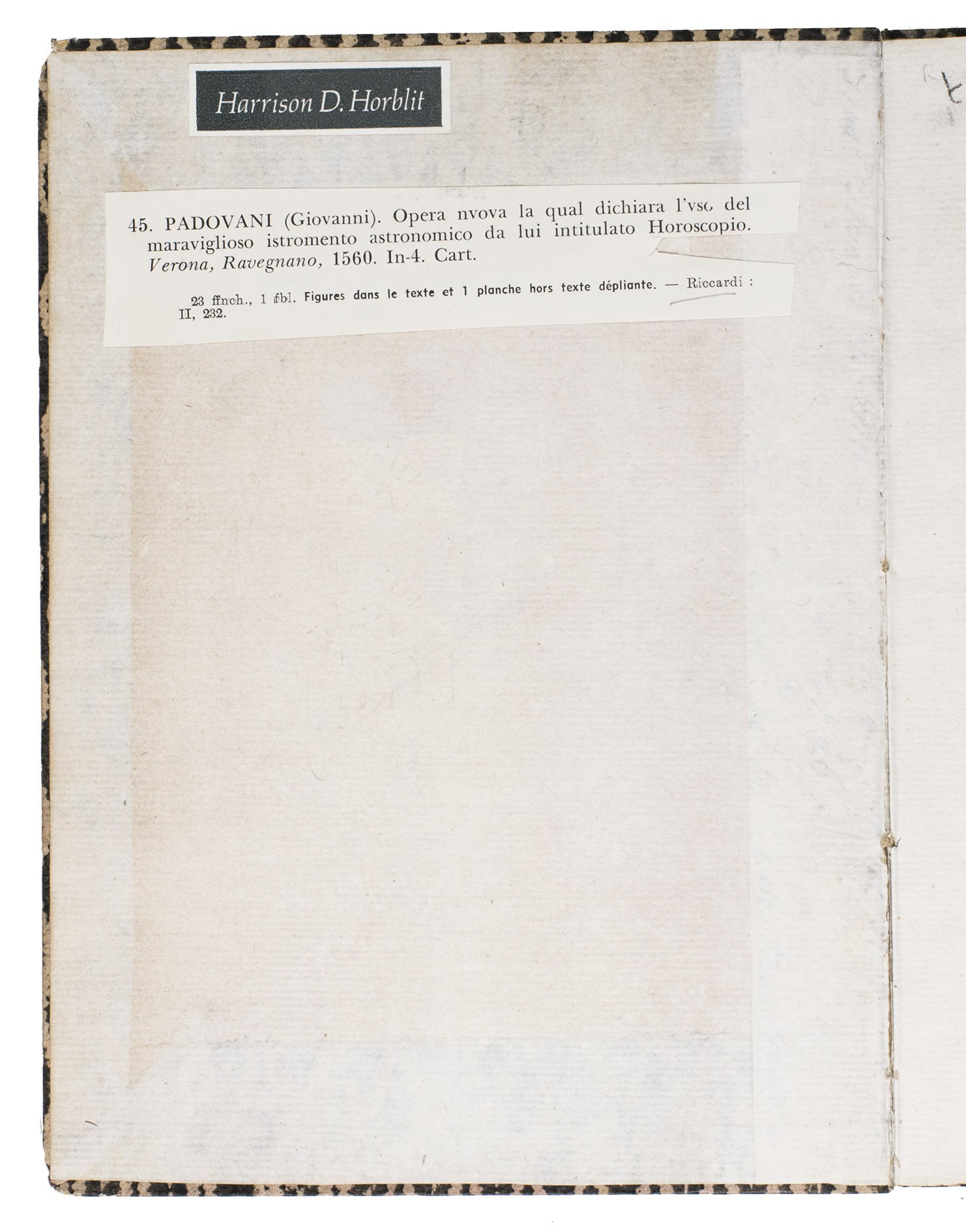PADOVANI, Giovanni.
Opera nuova ... tradotta di Latino in volgare, laqual dichiara luso del maraviglio so istrumento astronomico da lui intitulato horoscopio. ...
Verona, Paolo Ravagnano, 1560. 4to. With Ravagnanos woodcut emblematic device on the title-page (a hand emerging from a cloud and holding a stalk with three lilies, the whole in an oval in a rectangular scrollwork cartouche, with the motto, "candidio animus"), a folding plate (oblong long folio: 15.5 x 41.5 cm) containing 2 woodcuts (12.5 x 22 cm & 12 cm diameter with the 4.5 cm gnomen making it 14 x 13 cm) designed to be cut up to make the authors "horoscopio" in the form of a volvelle and the sundial-lunar dial, 3 decorated woodcut initials (pictorial), planetary and zodiac signs, and numerous tables of numerical data. 19th-century(?) boards, covered with block-printed decorated paper (black on white). [46], [2 blank] pp.
€ 12,500
The rare first significant publication (extremely rare with the folding woodcut plate) by the Veronese astronomer Giovanni Padovani (ca. 1512-ca. 1590), explaining the use of his "horoscopio", also known as a nocturnal or a horologium nocturnum, which he presents as his new invention. The folding plate contains two woodcuts for the owner to cut out and assemble (they could be pasted on paperboard or thin wood) to make two astronomical instruments that allow one to determine time by the sun, moon or stars. The plate may have been an option for those who could afford it, but many owners no doubt removed it in order to use it, as intended. The entire plate is lacking in nearly all copies, including those of the British Library and the Biblioteca Nazionale Naples, viewable on the Internet. Giuliari refers to "la figura incisa sul legno", but we have seen only one clear reference to a copy that includes the plate, at the Biblioteca Nacional in Madrid: "[1] h. de grab. pleg." (the Bibliothèque Nationale in Paris refers less clearly to "pièces limin.", and the Cat. del. Servizio Bibl. Nazionale notes "ill." but gives a link to the Naples copy without the plate). Neither Honeyman nor Houzeau & Lancaster mention the plate and Riccardi apparently knew it only from Giuliaris reference.
With a round 18th-century(?) armorial owners stamp the at the foot of the title-page (crowned arms in a laurel wreath, the crown perhaps a counts and the bearing bendy, 3 dark and 4 light) and the small elegant owners label of Harrison Horblit (1912-1988) on the paste-down. With a few tiny brown speckles on the title-page and very minor foxing in an occasional leaf, but generally in fine condition, with the paper still crisp, and only slightly trimmed (a bit of one fore-deckle surviving, about 2 mm trimmed at the head and probably not much more at the foot) giving generous margins. The pattern paper covering the later boards has torn along the front hinge. Important early treatise on the nocturnal, with the extremely rare folding plate containing two woodcuts. Aked & Severino, Int. bibliog. of gnomonica, p. 344; BMC STC Italian, p. 483; Cat. Servizio Bib. Nat. (5 copies); EDIT 16, CNCE 37911 (7 copies); Giovan Battista Carlo Giuliari, Tipografia Veronese (1871), ch. III no. XXXIX (p. 62); Honeyman 2382; Houzeau & Lancaster 4881 & 11368; Riccardi I.ii, col. 231; USTC 846031 (6 copies); WorldCat (8 copies); not in Zinner, Astronomische Instrumente; for background information: Günther Oestermann, "On the history of the nocturnal", in: Bulletin of the Scientific Instrument Society" (2001), pp. 5-9.
Related Subjects:
